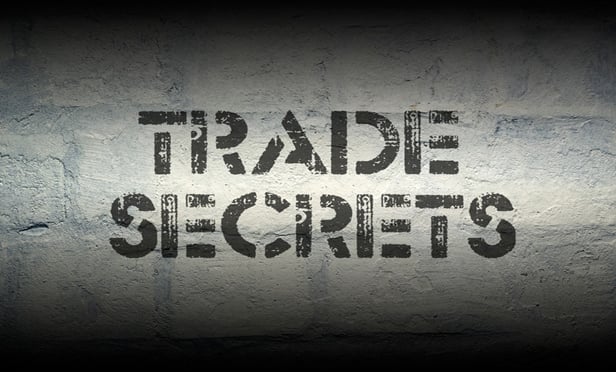Features

The Curious Persistence of the Six-Factor Trade Secret Test
This two-part article discusses the proof required for information to be considered a trade secret under U.S. statutory law, and includes detailed insight into the six-factor test outlined in the Restatement of Torts. Part One includes the evolving tests for determining a trade secret.
Features

From Good to Great: How Law Firms Achieve Best-in-Class Profitability
What makes a law firm a best-in-class financial performer — and how to make my own practice more successful and enjoyable? This article provides simple principles any small to midsize law firm can use to improve performance.
Features

Beyond the Logo: How AI Complicates Trademark Protection In the Digital Age
Today, building brands solely on the promise of a different product or service has become unsustainable. Any “new and improved” feature or benefit is quickly eclipsed by competitors. Consequently, brands signal category superiority not through rational claims, but by reinforcing a distinct persona — a “ness” comprised of distinguishing traits and behaviors that form an ownable brand essence difficult for competitors to replicate.
Features

AI Emerging As Critical Tool for Commercial Real Estate
In the fast paced world of commercial real estate, AI is emerging as a critical tool to increase efficiency, reduce costs and provide new opportunities. The infusion of AI into the real estate industry has the potential to change how properties are valued, managed and marketed.
Features

Non-Creditor Was Entitled to Actual Notice of A Chapter 11 Plan’s Injunction Barring Suits Against Insurance Carriers
A person who was not a creditor of a bankruptcy estate was entitled to actual notice of an injunction that would bar the non-creditor from suing the debtors’ insurance carriers, a federal court has ruled.
Features

ICE at the Workplace: A Toolkit for Employers
Imagine you are the general counsel of a company that maintains warehouses across the country with thousands of employees and you have heard that the government is visiting warehouses like your company’s to check the employment authorization of employees and potentially seeking to detain anyone the government believes may be undocumented. It is critical that you remain informed and ready to face increased scrutiny of your employees’ immigration status at your places of business.
Features

The Legal Industry’s Next Competitive Advantage: Reinventing the Revenue Cycle with Invoice-to-Cash
Billing and collections are the engine of a law firm’s financial health, yet at many firms, this core process remains fragmented, opaque, and manual. In a profession built on trust, precision and performance, the invoice-to-cash cycle is lagging far behind — and the cost of inaction is growing.
Features

Swearing Behind: Overcoming Asserted Prior Art in PTAB Proceedings
Part One of a Two-Part ArticleThis two-part article discusses the various legal and evidentiary requirements for antedating and removing prior art that patent owners should consider when their pre-AIA patents are challenged based on a prior art publication or activity that is not otherwise subject to a statutory bar. It also addresses considerations for petitioners to consider when developing their initial and ongoing invalidity strategies. Part One leads off with a discussion of the evidentiary requirements for proving earlier invention, conception and diligence and actual reduction in practice.
Features

Is Your Mailroom Keeping Up with the Increased Complexity of Taxes and Tariffs?
For law firms, the global shipping of servers and IT hardware is not just a logistical task — it’s a critical component of operational continuity and client service. A single oversight in documentation could delay sensitive shipments, compromise remote attorney onboarding, or interrupt court deadlines reliant on secure data transfer and IT setup. Here’s more detail on the evolving complexity and some key solutions.
Features

Indemnification Provisions In Hotel Management Agreements
This article discusses how hotel industry stakeholders attempt to address these competing concerns in hotel management agreements through indemnification language, how courts interpret these provisions, and considerations for hotel owners and managers when negotiating such provisions.
Need Help?
- Prefer an IP authenticated environment? Request a transition or call 800-756-8993.
- Need other assistance? email Customer Service or call 1-877-256-2472.
MOST POPULAR STORIES
- The 'Sophisticated Insured' DefenseA majority of courts consider the <i>contra proferentem</i> doctrine to be a pillar of insurance law. The doctrine requires ambiguous terms in an insurance policy to be construed against the insurer and in favor of coverage for the insured. A prominent rationale behind the doctrine is that insurance policies are usually standard-form contracts drafted entirely by insurers.Read More ›
- A Lawyer's System for Active ReadingActive reading comprises many daily tasks lawyers engage in, including highlighting, annotating, note taking, comparing and searching texts. It demands more than flipping or turning pages.Read More ›
- The Brave New World of Cybersecurity Due Diligence in Mergers and Acquisitions: Pitfalls and OpportunitiesLike poorly-behaved school children, new technologies and intellectual property (IP) are increasingly disrupting the M&A establishment. Cybersecurity has become the latest disruptive newcomer to the M&A party.Read More ›
- Abandoned and Unused Cables: A Hidden Liability Under the 2002 National Electric CodeIn an effort to minimize the release of toxic gasses from cables in the event of fire, the 2002 version of the National Electric Code ("NEC"), promulgated by the National Fire Protection Association, sets forth new guidelines requiring that abandoned cables must be removed from buildings unless they are located in metal raceways or tagged "For Future Use." While the NEC is not, in itself, binding law, most jurisdictions in the United States adopt the NEC by reference in their state or local building and fire codes. Thus, noncompliance with the recent NEC guidelines will likely mean that a building is in violation of a building or fire code. If so, the building owner may also be in breach of agreements with tenants and lenders and may be jeopardizing its fire insurance coverage. Even in jurisdictions where the 2002 NEC has not been adopted, it may be argued that the guidelines represent the standard of reasonable care and could result in tort liability for the landlord if toxic gasses from abandoned cables are emitted in a fire. With these potential liabilities in mind, this article discusses: 1) how to address the abandoned wires and cables currently located within the risers, ceilings and other areas of properties, and 2) additional considerations in the placement and removal of telecommunications cables going forward.Read More ›
- Guidance on Distributions As 'Disbursements' and U.S. Trustee FeesIn a recent case from the Bankruptcy Court for the District of Delaware, In re Paragon Offshore PLC, the bankruptcy court provided guidance on whether a post-plan effective date litigation trust's distributions constituted disbursements subject to the U.S. Trustee fee "tax."Read More ›
